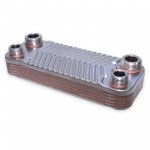jamie N
Well-known member
Anyone got experience of this? 10hp engine with a heat exchanger. The diaphragm pump circulates the seawater and is activated by an thermostat switch from the heat exchanger, so will be running intermittently depending on the usage of the engine.

